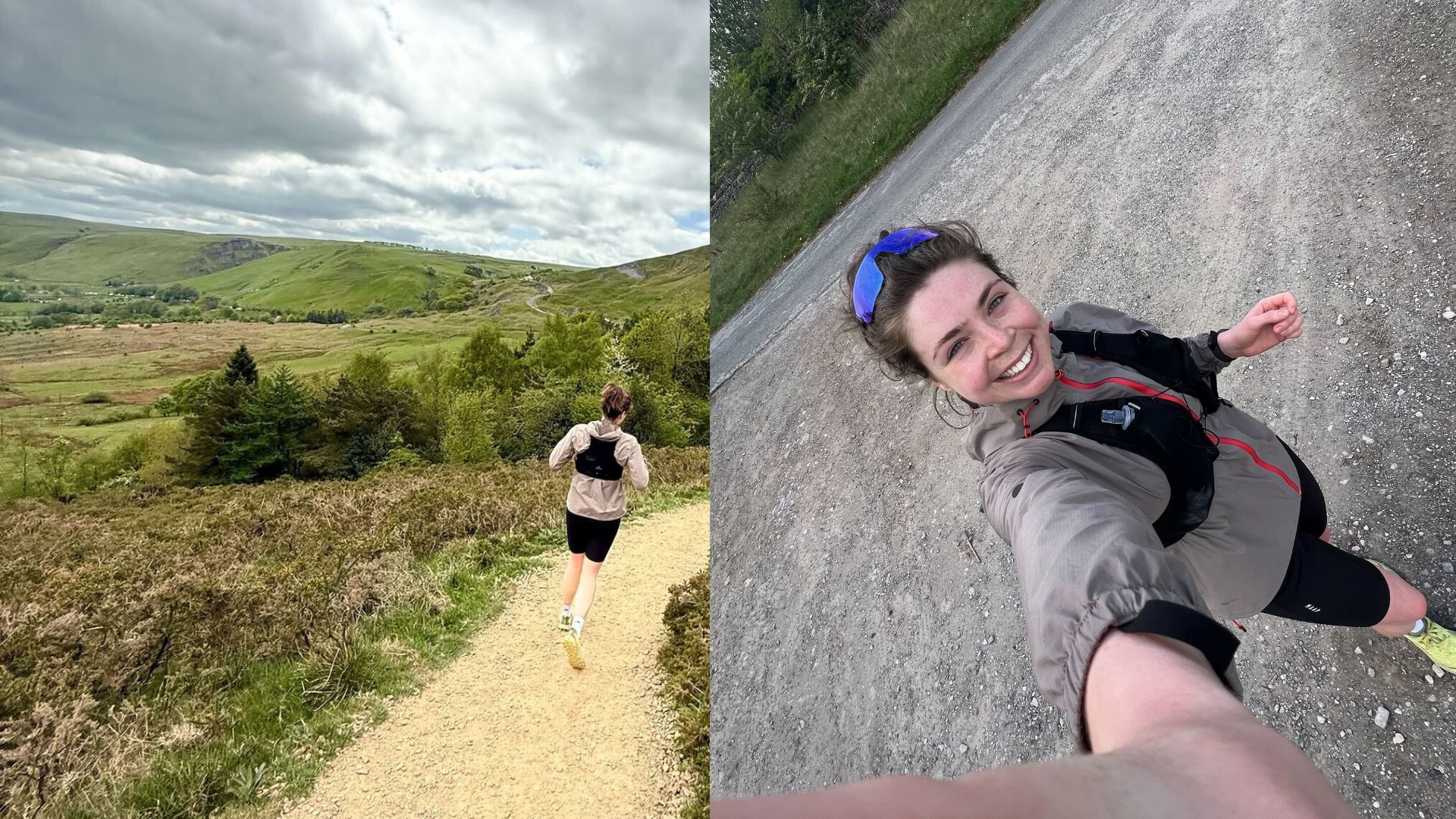I tried 'Jeffing' to get back into running - now the walk/run method is a staple in my routine
Think running's not for you? Think again. Jeffing is a way to stay moving and improve your cardio fitness without feeling exhausted


Jeffing is an exercise developed and named after Olympian athlete and coach Jeff Galloway. Instead of running for endless minutes, the technique encourages runners to incorporate some walking into their workout.
I got into Jeffing without knowing what it was. After my first marathon last year, I didn't run for about three months. I was tired of the training schedule, and after months out of my running shoes, I was nervous. So, instead of aiming for a 5km or even running for 20 minutes, I returned to the walk/run workout I did when I first started running over six years ago.
I later realised I was Jeffing, and over the four weeks, the exercises helped improve my cardiovascular fitness, muscle strength, running form, and speed. Here's what I did and what the experts recommend for anyone looking to try it.
What is Jeffing?
Jeffing is a technique that involves alternating periods of running and walking for a set amount of time. While you might think that's something to avoid when running, it can be the key to staying moving, injury-free, and even getting faster, especially if you're running as a beginner.
But while we all take breaks when out on longer runs, whether to stop at traffic lights or take a moment to get our breath, there's a difference between needing to stop and walk and Jeffing.
"The biggest difference between Jeffing and simply run-walking when you get tired is that Jeffing uses structured intervals right from the start and for the full duration of your run, however long that may be," says Jordan Foster, Coopah's head coach, working in partnership with the Royal Parks Half Marathon.
"For example, you might follow the 3:1 strategy: run for 3 minutes, walk for 1 minute. But the beauty of this technique is its flexibility. There are endless variations - from 30:30 (30 seconds running, 30 seconds walking) to 9:1 (9 minutes running, 1 minute walking)," she says.
Sign up to our free daily email for the latest royal and entertainment news, interesting opinion, expert advice on styling and beauty trends, and no-nonsense guides to the health and wellness questions you want answered.
I was a fan of the 30:30 technique since I did treadmill workouts after my strength training sessions as often as I ran outdoors, and the quick changes helped avoid the boredom.
How to Jeff
For beginners - the 30:30 strategy
- Run for 30 seconds: Run for 30 seconds, either on a treadmill or outdoors.
- Be sure to keep proper form by staying upright, leaning forward slightly from the hips, and engaging your core. Try landing on your midfoot rather than heel or forefoot.
- Walk for 30 seconds: Slow down to a comfortable walking pace, but try not to stop moving completely.
For intermediate runners - the 3:1 strategy
- Run for three minutes: This should be at a comfortable pace you can maintain for the full three minutes without feeling out of breath or needing to stop for any reason.
- Keep an eye on your form. If you start to feel uncomfortable, slow down your pace.
- Walk for one minute: Slow down to a comfortable walking pace, but try not to slow down to a complete stop. Keep moving.
For stronger runners - 9:1 strategy
- Run for 9 minutes: At a good pace, run for 9 minutes without stopping. Keep an eye on your form, making sure to keep your head up and looking forward.
- Walk for 1 minute: In this more advanced version of Jeffing, you're only walking for one minute between runs. Use this time to recover, but don't stop moving.

I went running in Peak District to test out my Jeffing skills, switching between walking and running intervals over the terrain.
How quickly should I run?
You should aim for a "push pace" in your Jeffing running intervals. This is hard enough that you might struggle to hold a conversation if you're running with a friend, but not so hard that you're completely out of breath or sprinting.
If you're a fan of the best fitness trackers, you can work this out using your heart rate. This vigorous exercise is about 90% of your heart rate (200 minus your age).
When I first started Jeffing, this was the part that eluded me. I made the mistake of running comfortably for 30 seconds, then walking slowly, almost stopping, for 30 seconds. While this may be beneficial for some people, the best way to improve your fitness is to challenge yourself.
But, as Foster says, "The most important part is finding what works best for you." You can vary the intensity to suit you and your fitness levels. For example, you might like to run for one minute, walk for one minute, run for two minutes, walk for one minute, and so on. Whatever works best.
What are the benefits of Jeffing?
- Improves cardiovascular fitness: This walk/run method means you can cover more ground without getting as tired, which encourages the cardiovascular and respiratory systems to get stronger. After a few weeks of Jeffing, I was running 30 minutes a day.
- It's adaptable: Even if you've been running consistently for years, Jeffing has benefits as it's an adaptable technique. For example, you could run at full power for 30 seconds and take the other 30 seconds walking to rest. For beginners, it could be just maintaining a run for 3 minutes and walking for 1 minute.
- Boosts motivation: "The idea of running continuously can feel intimidating or even impossible - and that can lead to demotivation before things really get going," says Foster. Sticking with a walk/run method like this one makes running feel more accessible.
- Jeffing may be better for those in menopause: While we don't have exact research on this, there's plenty of evidence (studies from the University of Tampere and Lyuliang University come to mind) that shows aerobic exercise (like walking and light running) can help reduce or manage symptoms like sleep issues, mood swings, and anxiety.
- Suitable for races: Whether you're looking to take on a marathon as a beginner or run your first 10km, Jeffing can help on race day and in training. "It helps manage fatigue, encourages smart pacing, and breaks the race down into manageable chunks, which is a game-changer for first-timers, older runners, or anyone juggling life, work, and marathon training," she says.
Why Jeffing is good for beginners
While I wasn't a beginner, I did feel like I was starting from scratch, and it is the perfect exercise for newcomers to running, as it helps build miles up slowly.
"This can help prevent injury by doing too much too soon, and it builds confidence, which leads to more motivation, and ultimately, you sticking with the sport long term," says Foster.
Also, as you switch between walking and running, you can Jeff for an hour or more without feeling absolutely exhausted.

Grace Walsh is woman&home's Health Channel Editor, working across the areas of fitness, nutrition, sleep, mental health, relationships, and sex. She is also a qualified fitness instructor. In 2025, she will be taking on her third marathon in Brighton, completing her first ultra marathon, and qualifying as a certified personal trainer and nutrition coach.
A digital journalist with over seven years experience as a writer and editor for UK publications, Grace has covered (almost) everything in the world of health and wellbeing with bylines in Cosmopolitan, Red, The i Paper, GoodtoKnow, and more.